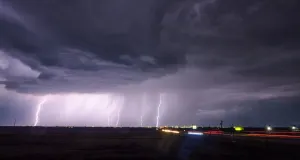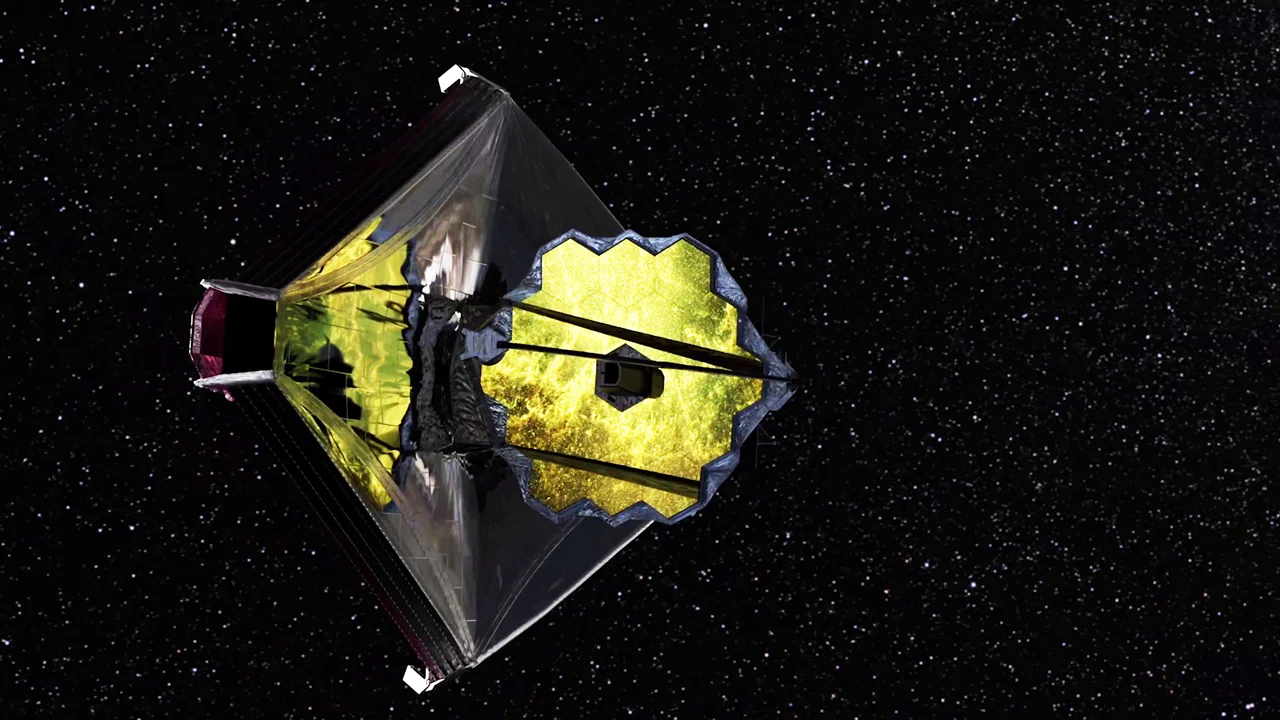
Webb's primary mirror was just hit by a meteoroid, but it was built to endure
This impact has slightly degraded Webb's performance, but the telescope is still on track to deliver its first 'wow' images.
NASA reports that the James Webb Space Telescope was struck by a meteoroid sometime in late May, which was "larger than was modelled, and beyond what the team could have tested on the ground."
Every day, Earth sweeps up tonnes of ice and rock from space. Much of this debris goes unnoticed to us on the ground because it is just tiny flecks of ice or specks of dust. But mixed in with all that smaller stuff is a smattering of slightly larger bits. These show up as flashes of light in our night sky, from brief and barely noticeable meteors to intense fireballs that can light up the sky as if it was daytime.
Out at Lagrange Point 2, following along with Earth a million and a half kilometres farther away from the Sun, the James Webb Space Telescope flies through this same debris-filled environment. Webb's mirror is roughly a trillion times smaller than the Earth, but it can still be hit by meteoroids as it flies through space.
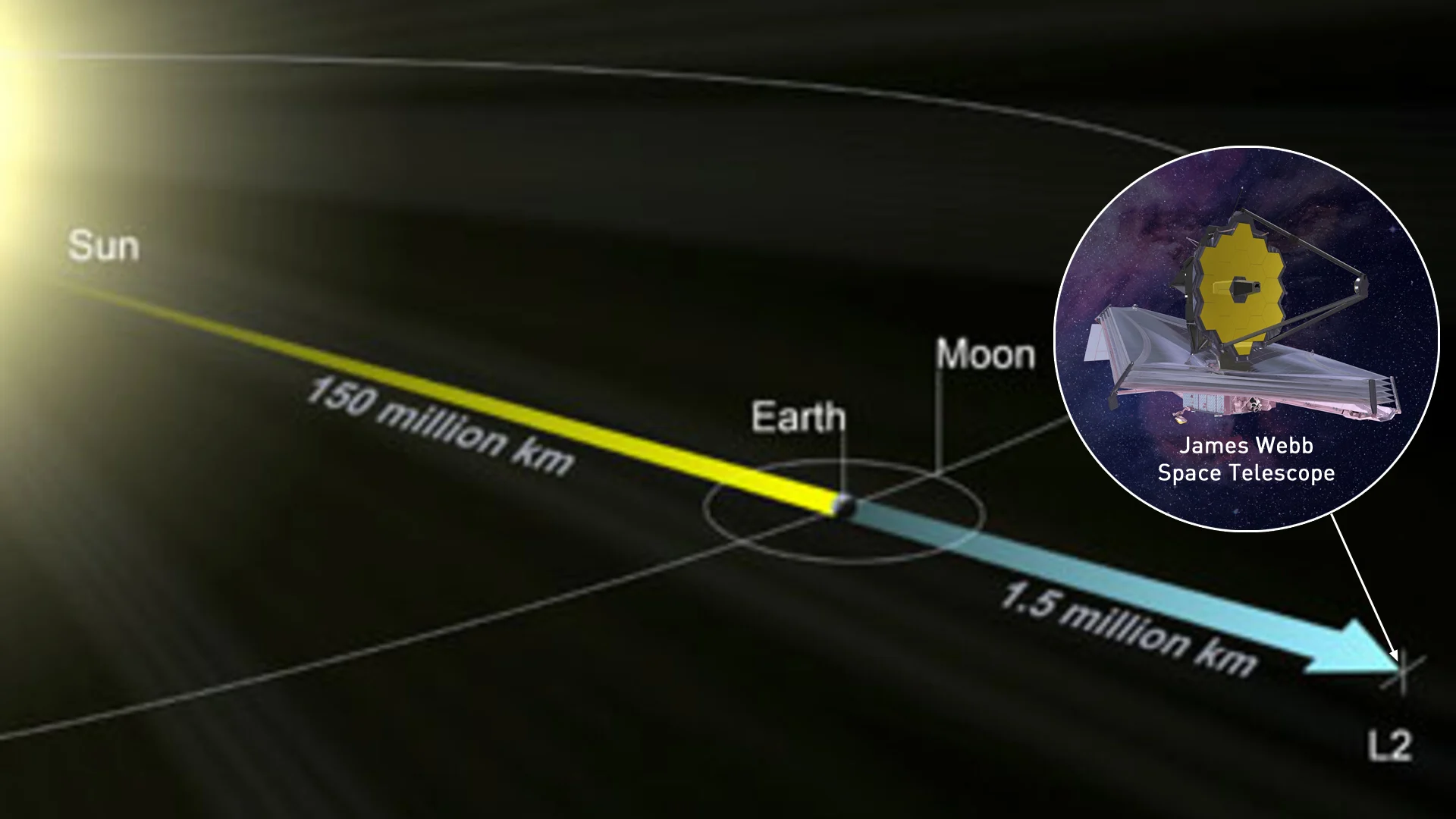
This illustration shows JWST at Lagrange Point 2. Credit: ESA/NASA
"With Webb's mirrors exposed to space, we expected that occasional micrometeoroid impacts would gracefully degrade telescope performance over time," Lee Feinberg, Webb optical telescope element manager at NASA Goddard, said in a mission update this week.
According to NASA, the mission team can reorient Webb in space to turn its mirrors away from any incoming debris streams we know about, such as those that produce the 30 or so meteor showers each year. Still, since the telescope launched in December, it has been hit a total of five times. The most recent of these occurred sometime between May 23 and 25, when one of the telescope's hexagonal mirror segments took a hit from something a bit larger than they expected.

These primary mirror 'selfies' were taken on February 11 and March 11, 2022, by Webb's NIRCAM instrument. Credit: NASA
"Since launch, we have had four smaller measurable micrometeoroid strikes that were consistent with expectations and this one more recently that is larger than our degradation predictions assumed," Feinberg explained. "We will use this flight data to update our analysis of performance over time and also develop operational approaches to assure we maximize the imaging performance of Webb to the best extent possible for many years to come."
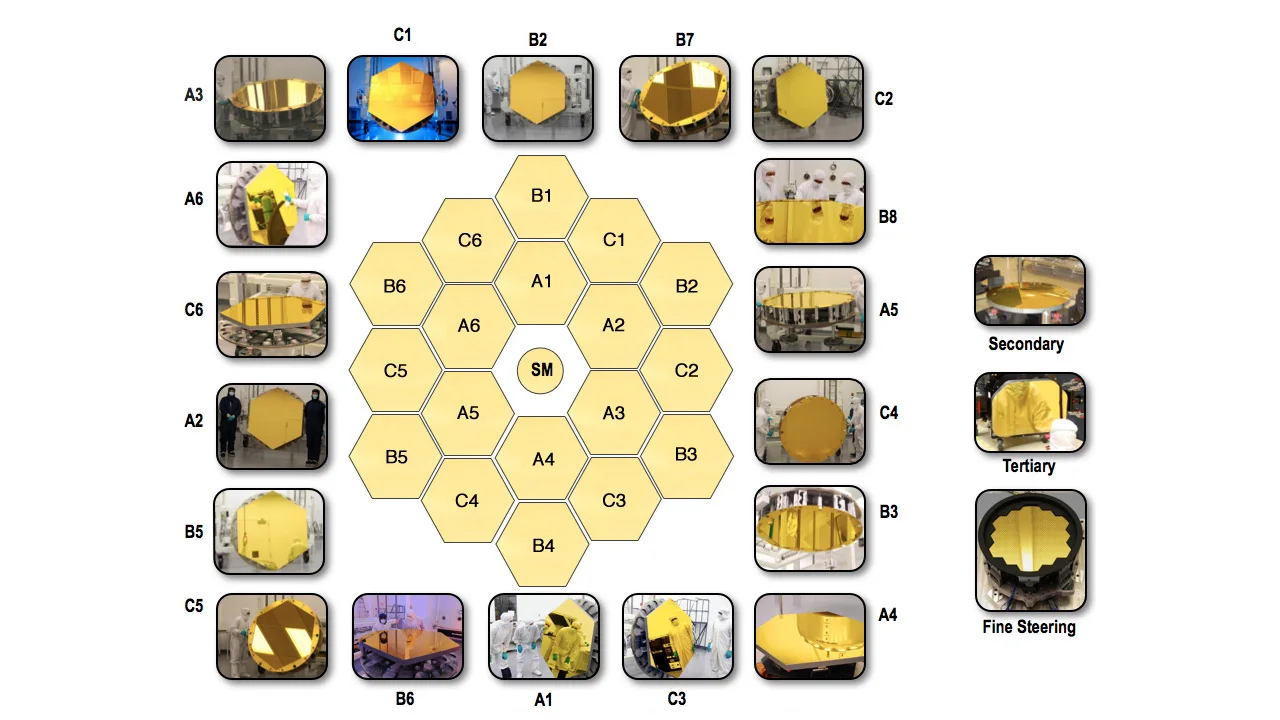
This graphic shows a diagram of Webb's primary mirror, with the mirror segments labelled, and pictures of each mirror segment before it was installed. The mirror segment identified as being struck in this latest impact was C3. Credit: NASA
As they orbit the Sun, meteoroids travel at speeds averaging 25 kilometres per second, or around 90,000 km/h. So, even the tiniest speck of dust can pack quite the punch if it hits something.
Webb was built to withstand these kinds of impacts, though.
"We know Webb will get struck by micrometeoroids during its lifetime, and we have taken that into account in its design and construction," Paul Geithner, the deputy project manager for Webb, said in a Q&A back in 2017. "We sized Webb's main mirror so that even after years of little impacts it will still have the reflective surface area and quality necessary to do the science. We even did tests on the ground that emulated micrometeoroid impacts to demonstrate what will happen to the mirrors in space."
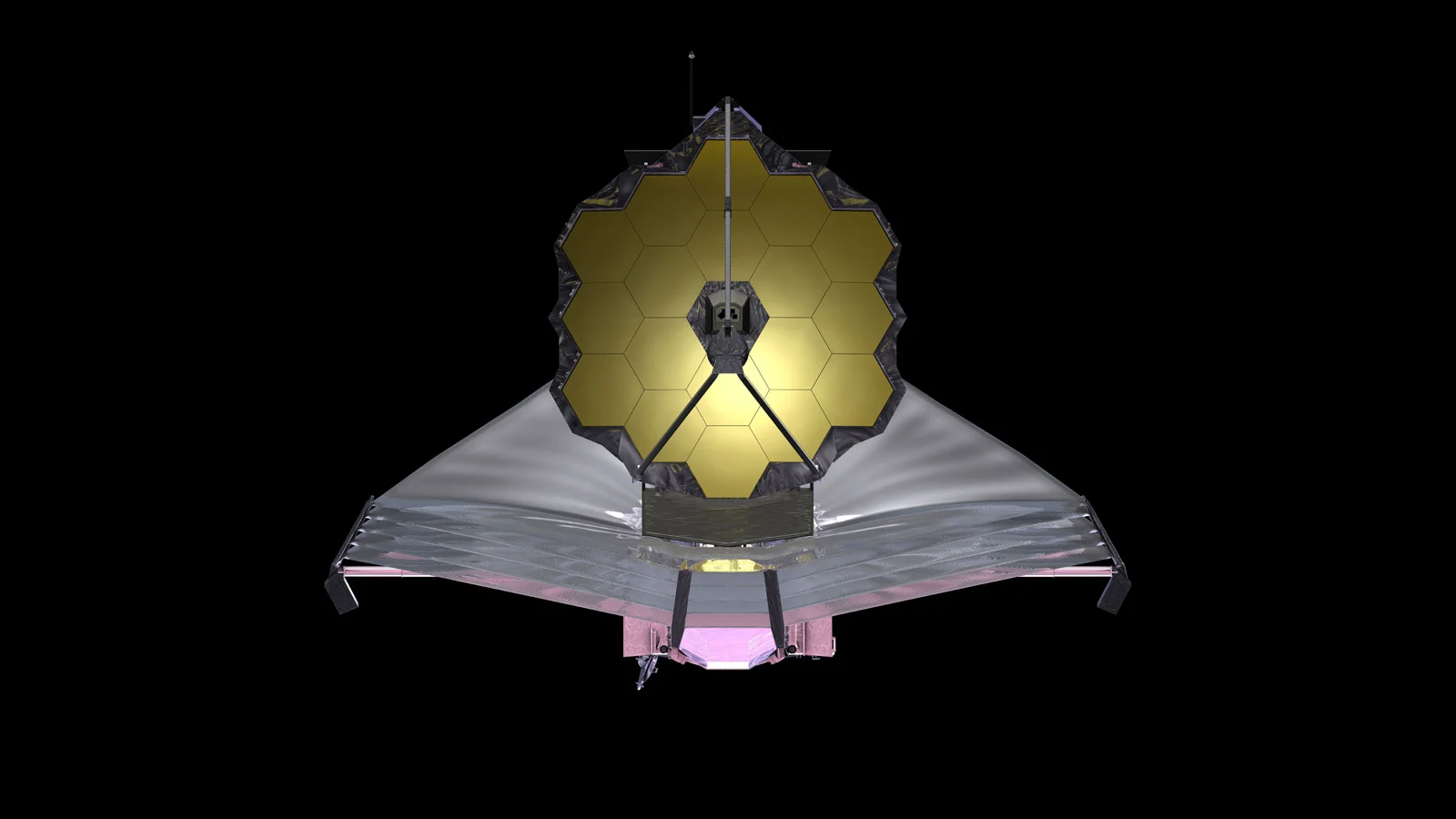
This artist's impression of the James Webb Space Telescope shows it face-on to the fully-deployed primary mirror. Credit: NASA
"Also, almost all of Webb's sensitive components (besides the mirrors and sunshield) are protected behind 'micrometeoroid armor'", Geithner added. "When micrometeoroids do strike, most are so small that they totally disintegrate upon impact, even when they hit something thin like thermal blankets or a sunshield membrane. Critical wires and electronics are shielded behind even more robust metal 'armor' or inside metal boxes."
In the latest mission update, the team explained that Webb's individual mirror segments can be adjusted to compensate for the little imperfections that show up due to these impacts. This minimizes the effect on the telescope's observations of the universe.
Given that this most-recent impact caused a more significant distortion than was expected, simply adjusting the mirror apparently cannot cancel out its effects altogether. However, the telescope's pristine condition when it launched actually means that it is still delivering observations better than what they expected to get.
According to NASA, "due to careful work by the launch site teams, Webb's optics were kept cleaner than required while on the ground; their pristine cleanliness improves the overall reflectivity and throughput, thereby improving total sensitivity. This and other performance margins make Webb's science capabilities robust to potential degradations over time."
(Thumbnail image courtesy NASA's Goddard Space Flight Center)







